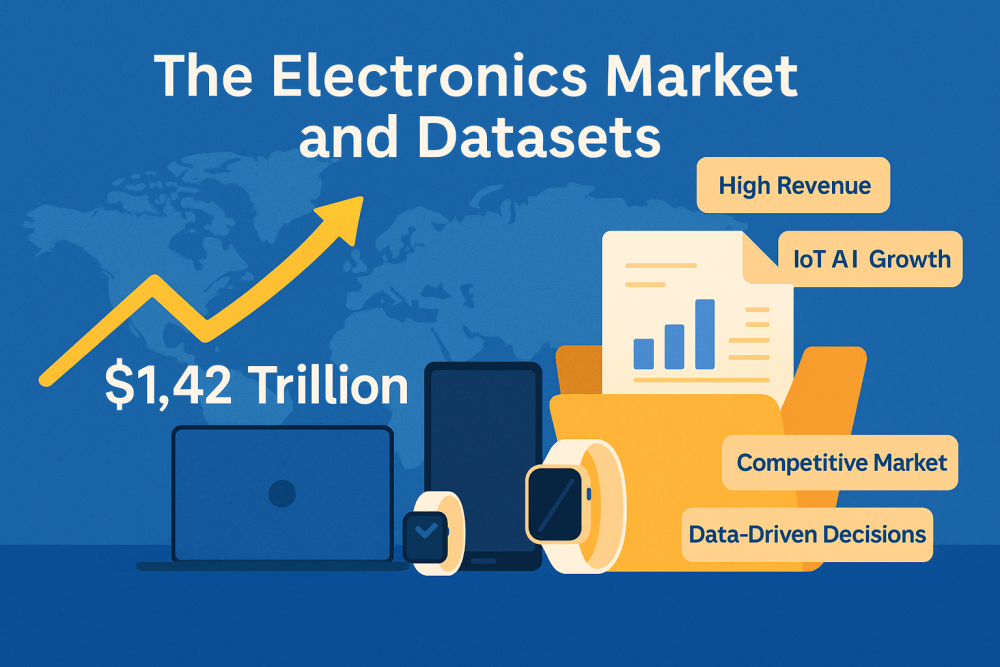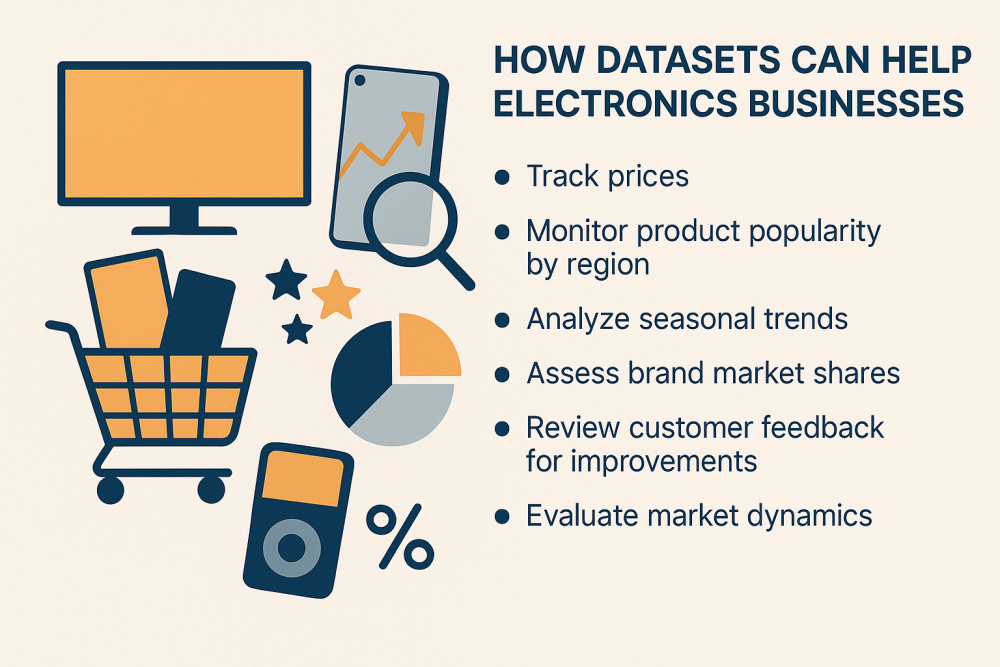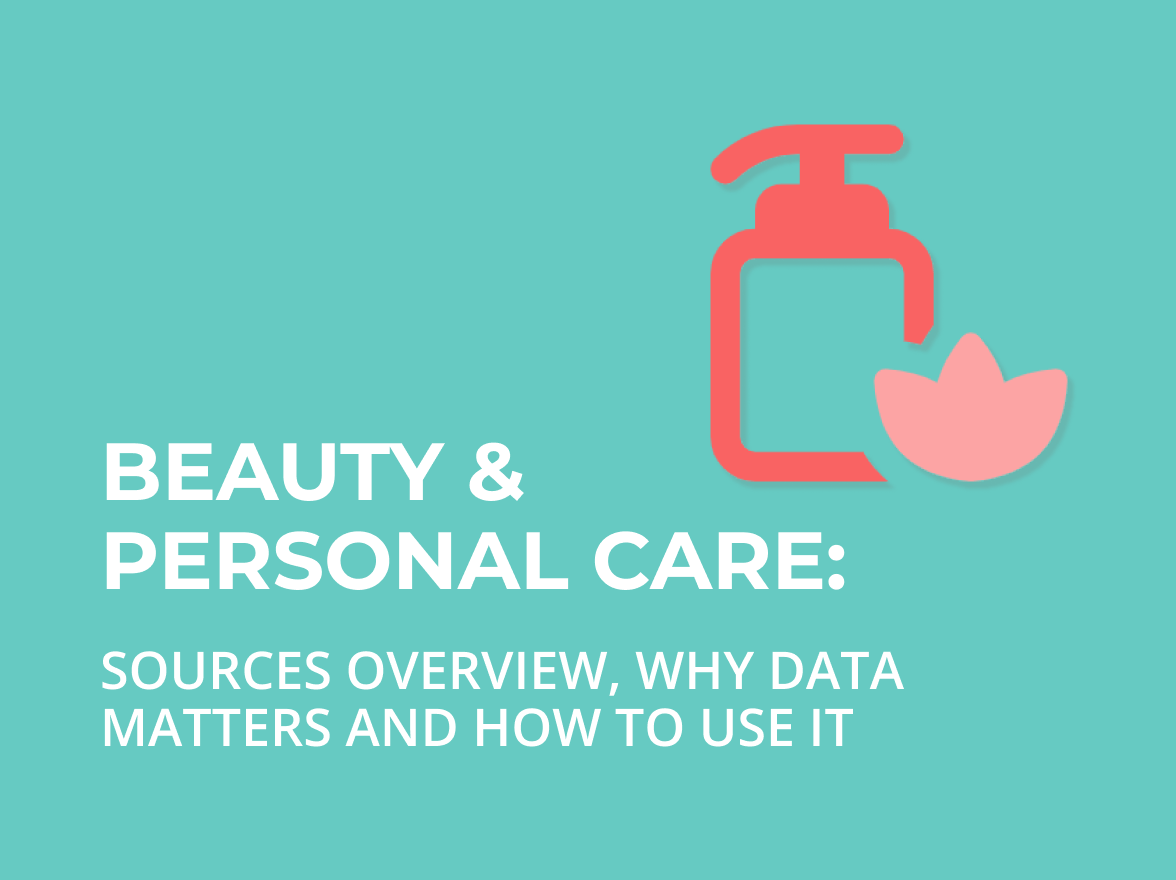Beauty & Personal Care: Sources overview, why data matters, and how to use it
The Beauty & Personal Care market is rapidly evolving — fragmented across private-label drugstores, prestige specialists, and fast-scaling e-commerce platforms.
The overall global electronics market (covering both consumer and industrial electronics, components, etc.) was valued at approximately USD 788.6 billion in 2024, and is forecast to grow to ~USD 1.42 trillion by 2033 at a CAGR of 6.2%.
The consumer electronics segment, fueled by gadgets, media devices, wearables, and smart home products, represents a large portion of the industry. It already exceeds USD 1 trillion in 2024 and is projected to continue its upward trend into the next decade.
Forecasts vary, but most expect CAGRs between 2.8% and 6%, depending on market scope and methodology.
| Market Segment | 2024 Estimate | Forecast & CAGR |
| Overall Electronics Market | USD 0.8 – 1.24 trillion | Growing to 1.4 – 1.75T by 2030s (6–7%) |
| Consumer Electronics Market | ~USD 1.0 – 1.4 trillion | Up to 2.1 – 2.15T by 2030–2033 (5–9%) |
| Asia-Pacific | ~50% share (~USD 536B) | — |
| North America (U.S.) | ~USD 186B | — |
| Europe | ~20% share, growing | — |

The answer: Datasets.
Whether you are a global or local retailer, wholesaler, or manufacturer, datasets are the key to tracking market information and turning it into a competitive advantage.
Publicly available sources — from global marketplaces to national retail chains — can be used to build datasets that include:
Monitor competitor pricing to adjust your own strategy.
Example: A major retailer tracks the prices of 50,000 SKUs across Amazon, Best Buy, and Walmart weekly to remain competitive without undercutting unnecessarily.
Understand which products sell best in specific markets.
Example: Data shows that high-end gaming laptops dominate in North America, while budget-friendly models outsell them in Southeast Asia.
Spot recurring sales cycles to optimize promotions and inventory.
Example: Smart TV sales spike in Q4 ahead of holiday seasons in both Europe and the U.S.
Identify which brands are gaining or losing ground.
Example: Tracking smartphone market share reveals that a mid-tier brand has gained 3% in a specific region, signaling a growing threat.
Extract insights from ratings and reviews to inform product design.
Example: Sentiment analysis shows repeated mentions of battery overheating in a popular tablet, prompting a design update.
Track changes in pricing, product availability, and demand over time to anticipate shifts.
Example: Spotting a sudden drop in availability of a certain microchip alerts manufacturers to potential supply chain issues.
Stay ahead of technology trends.
Example: Dataset analysis flags a rise in sales of AI-enabled home assistants, prompting a retailer to expand its smart home section.

Global marketplaces:
Major retail chains:
Local/Emerging market platforms:
Collecting and maintaining such datasets manually is complex, time-consuming, and costly — often requiring a full internal team.
SSA Group offers a smarter solution: safe, ethical web crawling to collect the exact data you need from publicly available sources — fully tailored to your requirements.
We deliver ready-to-use, structured datasets that are:
With SSA datasets, you can focus on strategy, innovation, and growth, while we handle the complexity of data collection and preparation.
📌 Learn more: SSA E-commerce Datasets
The electronics market is vast, competitive, and rapidly evolving. To succeed, you need accurate, timely data to guide your decisions — from pricing and inventory planning to market expansion and trend analysis.
With SSA Group’s dataset services, you can gain the insights needed to move faster, reduce risks, and seize opportunities in a trillion-dollar industry.
Contact us today to start building your competitive advantage.

The Beauty & Personal Care market is rapidly evolving — fragmented across private-label drugstores, prestige specialists, and fast-scaling e-commerce platforms.

When we talk about ecommerce, most minds immediately picture flashy gadgets, fashion, or home décor. But behind the scenes lies a titan of a category – Industrial & Scientific – quietly powering manufacturing, healthcare, research labs, infrastructure, and even backyard workshops.
you're currently offline